WARM HOLIDAY WISHES FROM OUR TPS-GSU TEAM

‘Tis the Season! We wish you all the special joys of the holidays this month. As we conclude this year, and pause to celebrate our individual traditions with family and friends … please know that you are appreciated! Your participation in our programs this year, with your friendship and professional association, has enriched our lives and spurred our enthusiasm to continually expand and excel in supporting your professional learning.
In this spirit of the season, we bring you primary sources of two predominant holiday celebrations in our nation this month.
HAPPY HANUKKAH: December 16th this year (1st Day)
To begin our commemoration of Hanukkah, here is an excerpt from the Library of Congress’ Today in History for December 15, 2014:
“In 2006, the eve of December 15, marked the beginning of Hanukkah, the Jewish holiday commemorating the rededication of the Second Temple of Jerusalem in 164 or 165 BCE. Hanukkah falls on the eve of the twenty-fifth day of the month of Kislev on the Jewish calendar. Also referred to as the Festival of Lights, Hanukkah recalls the Talmudic story of the Temple’s one-day supply of oil miraculously burning for eight days.” (To read the complete article for Today in History, click here.)
To further commemorate Hanukkah, we want to share with you an excerpt from the article posted on December 14, 2012, at the Library of Congress blog, From the Catbird Seat – Poetry and Literature at the Library of Congress:
“In honor of Hanukkah, the Poetry and Literature Center would like to celebrate one of the most influential Jewish-American poets: Emma Lazarus.
Most Americans know Emma Lazarus for the famous lines from her sonnet “The New Colossus” transcribed at the foot of the Statue of Liberty: “Give me your tired, your poor,/Your huddled masses yearning to breathe free,/ The wretched refuse of your teeming shore./ Send these, the homeless, tempest-tost to me,/ I lift my lamp beside the golden door!” Yet, Lazarus’ legacy spans much more than five fantastic lines of poetry. Lazarus was born in the New York in 1849 and descended from a line of Sephardic Jews who came to the United States via Portugal. She received a private education and from a young age became a master of languages—she was a fluent reader and translator of classic Greek and Latin, as well as modern French, German, and Italian. Throughout her life, Lazarus maintained a correspondence with some of the most influential writers of her time, including Ralph Waldo Emerson, William Morris, Robert Browning, and Henry James.
Lazarus wrote her first collection of poetry and translation between the ages of fourteen and sixteen, and it was published commercially when she was only 18. She went on to publish five more books, including a verse-play. In 1882, she published Songs of a Semite—the first book of poems to explore Jewish-American identity published in the United States.
Lazarus was an early advocate for the rights of the Jewish refugees and immigrants. She wrote several prose pieces dedicated to raise awareness of the plight of the Jewish people, and her famous lines from “The New Colossus” are in fact inspired by the influx of Jewish exiles that journeyed to the United States from Russia in the 1880s. Lazarus’ poetry truly gave a voice to a people who were voiceless.
In honor of Emma Lazarus and the Jewish people that she so loved, please find links to eight poems—one for every day of the Hanukkah holiday:
- The New Colossus
- The Feast of Lights
- In Exile
- In the Jewish Synagogue at Newport
- Chopin
- Long Island Sound
- Echoes
- To R. W. E.”
(To view this Library of Congress blog post in full, please click here.)
MERRY CHRISTMAS: December 25th each year
In our remembrance of Christmas traditions from our nation’s history, we would be remiss to not begin with the celebration of Christmas Eve on December 24th each year. In this year’s Today in History from the Library of Congress of December 24, 2014, (excerpt below) there is a delightful history of the fun children’s festivities surrounding the classic poem that describes the magical visit of Santa Claus!
‘Twas the night before Christmas, when all through the house
Not a creature was stirring, not even a mouse;
The stockings were hung by the chimney with care,
In hopes that St. Nicholas soon would be there….
Clement C. Moore, “A Visit from St. Nicholas”
‘Tis December 24, the day before Christmas, and all through the land, families send excited children to bed with a reading of Clement Moore’s classic poem, “A Visit from St. Nicholas”.
Moore is thought to have composed the tale, now popularly known as “The Night Before Christmas,” on December 24, 1822, while traveling home from Greenwich Village, where he had bought a turkey to fill the last of several baskets that his family was accustomed to donating to the poor during the holiday season.
Perhaps inspired by the plump, bearded Dutchman who took him by sleigh on his errand through the snow-covered streets of New York City, Moore penned A Visit from St. Nicholas for the amusement of his six children, with whom he shared the poem that evening. His vision of St. Nicholas draws upon Dutch-American and Norwegian traditions of a magical, gift-giving figure who appears at Christmas time, and was likely influenced by descriptions of St. Nicholas appearing in several publications from recent years, including Washington Irving’s A History of New York (1809).
(Please click here to view the full article for Today in History on December 24, 2014, from which the above excerpt was quoted.)
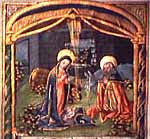
Illuminated manuscript pages. Nativity Scene Illumination II,
Theodor Horydczak, photographer, ca. 1920-50.
Each year on December 25th in our nation, and in many countries throughout the world, Christmas Day is celebrated. For some, it is a deeply religious event, and for others, it is a time to gather with loved ones and celebrate with gifts of appreciation and joy. For many, it combines the spiritual celebration and folklore traditions including gifts under the Christmas tree, caroling, and many other festivities. The Library of Congress’ Today in History for December 25, 2014, provides primary sources for both:
“On December 25, Christians around the world celebrate the birth of Christ. The origins of the holiday are uncertain; by the year 336, however, the Christian church in Rome observed the Feast of the Nativity on December 25. At that time, Christmas coincided approximately with the winter solstice and the Roman Festival of Saturnalia. Today, observations of Christmas incorporate the secular and religious traditions of many cultures, from the ancient Roman practice of decorating homes with evergreens and exchanging gifts at the New Year to the Celtic Yule log.”
Here are additional primary sources for you to bring to your classroom as a way to engage your students with a unique inquiry into the holiday traditions surrounding Christmas:
- Learn about the inventors of electric Christmas lights on the Library’s Everyday Mysteries Web site.
- The American Memory collections contain a panoply of holiday pleasures, from festive photographs of Christmas cards, to Christmas trees, decorated homes, choirs, nativities, and Santa Claus. To locate more images, search the American Memory photographic collections on Christmas.
(To find more primary sources and lesson plans ideas for Christmas, or read the full article on Today in History for December 25, 2014, please click here.)
Upcoming Programs and Workshops by TPS-GSU
- Register for EDUC 7212 Digital Primary Sources (registration ends Jan. 26, 2015)
- Register for TPS Level I – Two Day Training at South-Cook Intermediate Service Center on January 13th and 20th, 2015
- More workshop dates coming soon – including Coaches TPS-GSU Academy Online
We welcome your questions to assist you with registration.
Please call Dr. Lucianne Brown, Director (708-235-7575)
or Lynn Johnson, Project Manager (708-235-7577)
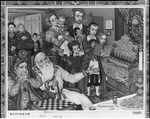
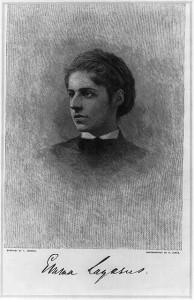
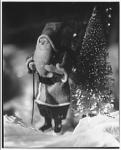
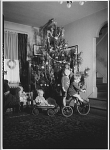
We would welcome anyone sharing their traditions around Hanukkah, Christmas, or Kwanzaa